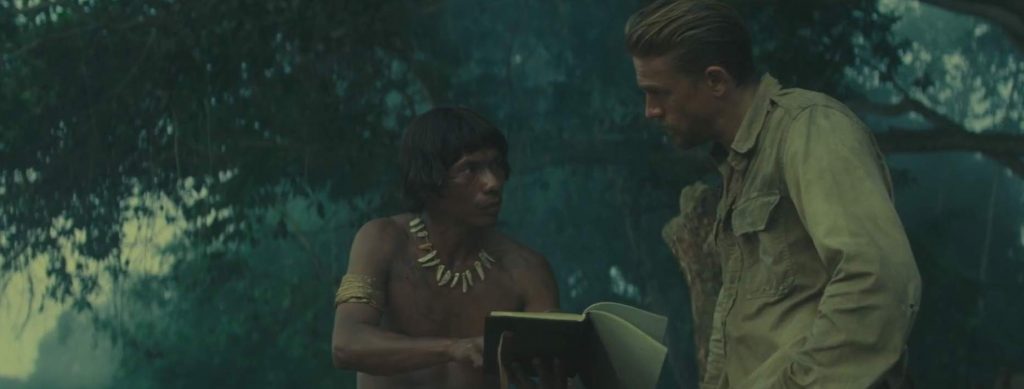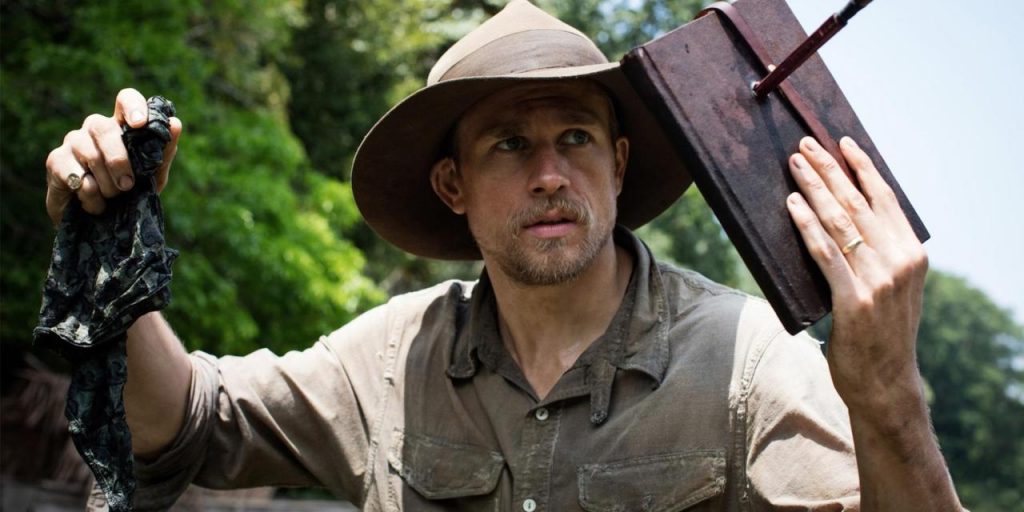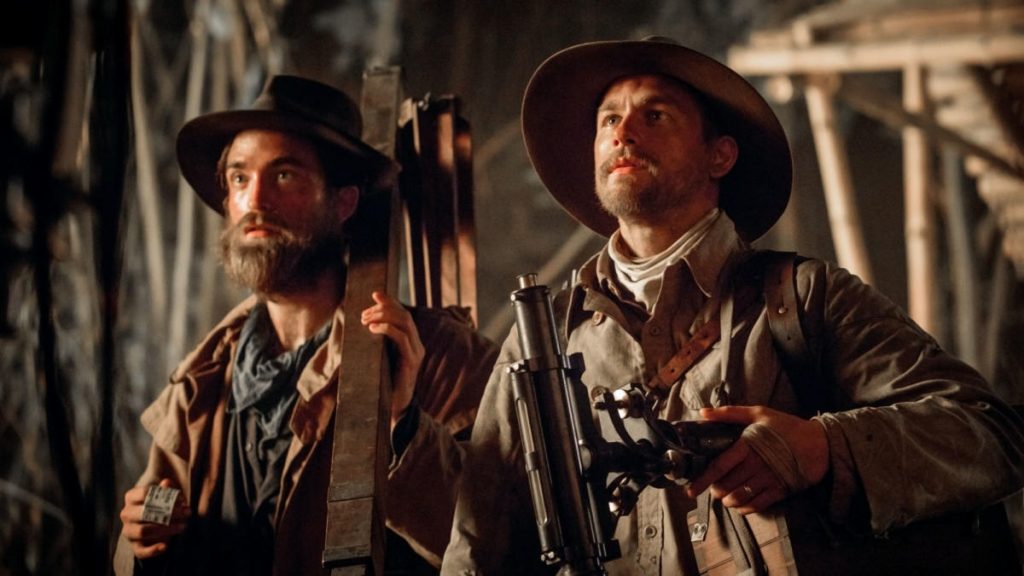I thoroughly enjoy watching James Gray’s films. The Yards is easily my favourite film about public transit corruption, and Two Lovers is a movie that – despite its relative simplicity – has stuck with me in the years since I saw it. Gray has also made four other features, all of which I have enjoyed to varying degrees. His much-discussed tendency toward classicism in his cinema is intriguing, as his camera movements are minimal and subtle, character motivations are not always explicitly spelled out, and the endings feature no cinematic bows. He doesn’t feel the need to provide closure, either; Gray makes films that end with questions, as opposed to statements, which is always the way I want my films to end.
I also love listening to James Gray talk. I could listen to him expound on the future of cinema for hours, and I could listen to him discuss the form’s past for even longer. His thoughts are intriguing, his takes well-pondered, and as a bonus his voice happens to be remarkably soothing.
Gray’s latest film, The Lost City of Z, has been noted as a departure for him, even though it’s less of one than people have been selling. (It’s mostly just bigger and doesn’t take place in New York. There were more literal departures involved, sure, but not so many stylistic ones.) It is a film about explorer Percy Fawcett, a man who becomes obsessed with getting to uncharted territory, but it is a film made by a man who seems to re-treading over well-charted territory.
The contradictions remain fascinating.
My first exposure to James Gray, interesting cinematic thinker, came via the Bret Easton Ellis podcast, a consistently surprising source of thoughtful film criticism. Gray and Ellis were talking about the virtues of Vertigo, and also the re-release of five of Alfred Hitchcock’s lost films in the 1980s*. The discussion was basically built around the power of seeing a film in a theatre, although it quickly led to a less enjoyable tangent.
*At some point in the 1960s, Hitchcock removed Vertigo, Rear Window, The Trouble with Harry, Rope, and his 1956 version of The Man Who Knew Too Much from circulation.
As the discussion progressed, Gray and Ellis talked about how future visual storytellers will not be similarly enthralled by the cinematic experience simply because they do not go to cinemas in the same way people of Gray’s generation did. There are fewer and fewer youthful people who will go to a theatre to see a new James Gray film; attendance at the screening I went to was a distressingly low four people, and given our presumed life expectancies, I will (probably) be the only one of those viewers who is still alive in 2027. When you see younger people in movies, it is usually in a movie designed for the youth, a movie taking place in a version of the galaxy that is guarded by people who make hacky mixtapes. Percy Fawcett is no audiophile; even by 1926 standards his sound system is uninspiring. And his world is considerably smaller than the one that draws in big crowds.
At its core, The Lost City of Z is a movie about geographical exploration made by a thoughtful auteur; ipso facto, it naturally becomes a movie about exploring one’s own existence, lest it crumble into a boring journey from point A to point B (then back to point A, then [theoretically] to point Z). The unspoken idea we are asked to hold onto throughout the film is always that – while our hero progresses his own exploration efforts – he does not see what he leaves in his wake while he does so. Fawcett knows he needs to leave his family behind to see his potentially mythical city, but he is willing to do so if it means getting what he feels he needs from his journey.
Naturally, in the press for The Lost City of Z, the topic of director as explorer came up constantly, as it does. In discussing his film on a podcast with Sean Fennessey, Gray reiterated the obvious parallels between being a director and being an explorer: one has to leave their family behind for some time as they become obsessed with completing a singular goal, a task that usually takes multiple years to complete before they can fully return home. These parallels arise anytime a director makes an exploration-based film; they happened on the press run for Interstellar and they happened with Apocalypse Now long before that. Surely there is an old interview with John Huston around the release of The Treasure of the Sierra Madre that compares his affair with Olivia de Havilland to Humphrey Bogart’s quest for gold. The more things change, the more they stay the same, and trade papers are not immune.
As a cinematic explorer though, Gray never really seems to be looking for something new in his films. At best he looks to reinvent what has long since past; while Percy tries to find a part of the world we never knew, Gray is trying to return to a cinematic style that he wishes we never left behind.
In a recent interview with The AV Club’s Ignatiy Vishnevetsky, Gray was discussing his lack of knowledge of Benedict Cumberbatch’s career, as Cumberbatch was once in the running to play Fawcett: “[Plan B, the film’s producers] asked if I’d meet with him. And I didn’t know who he was, because I’m a loser. I watch a movie every single night, but it’s usually from before 1960. I didn’t even know about Sherlock.”
Now, I am not here to talk about Sherlock (except to say that the man who plays Moriarity is an objectively terrible performer); the most interesting part of that quote is Gray saying he almost exclusively watches movies that are over fifty years old. I think there’s a touch of hyperbole attached to his statement – he spends most of his interviews referencing directors whose most prominent works were released in the 1970s – but I’m sure something close to it is true. This is something that would (probably) seem obvious to me even before I knew it to be true. Gray’s style is rather simplistic, his pacing classical, and his dedication to shooting on 35mm unwavering. He typically tackles his topics in old-fashioned ways, and all but two of his films take place decades before they were released. His work is more interested in what used to be than what is now.
Throughout The Lost City of Z, I was fascinated by this contradiction: why would a man whose work seems to hearken back to the past so much want to make a movie about a man searching for a new place? Does Gray really miss the days of the gentleman explorer this much? Does he miss films about them? Or does he realize he kind of needs to jump at the chance to make a film when it arises?
For seemingly the first time in his career, the idea to make The Lost City of Z was given to Gray by somebody else. As opposed to Gray’s typical self-generation of ideas, Plan B forwarded Gray a galley of David Grann’s book in 2008 to look at as something they thought Gray should attempt as his next project. Gray was initially skeptical, but then started to find elements he could attach himself to through learning more about Fawcett’s various journeys. It took some time to get the film off the ground, of course, but Gray was eventually able to see himself in the quest, and he stuck with it through all the various meetings and tribulations involved in making a mid-budget film in the modern filmmaking environment.
One of the more modern threads that runs through The Lost City of Z is the film’s treatment of Percy’s wife Nina. While about to launch his latest journey, Nina offers the idea that she should go with him. This, given that the film takes place in the first quarter of the 1900s, is shot down by Percy rather quickly. He feels that both parents cannot abandon their children at the same time and – given the time period – the man automatically wins the argument.
When this scene happens in the movie, it comes off as a little forced, a little too “look how woke I can be.” By the end of the film, though, it pays off; we realize the film becomes not just about Percy’s exploration, but what that exploration does to the others in his wake. While Percy travels to The Lost City of Z in his final journey from which he never returns, Nina is left to navigate a different sort of metaphorical jungle. She has to raise her remaining kids by herself, navigate a world that is by design unfriendly to women, and also live the rest of her days without a solid answer as to what happened to her husband and oldest child. When you make a decision, there is always aftermath, and sometimes that aftermath affects the world around you in adverse ways.
I am nowhere near as obsessed with the past as James Gray seems to be, but I am a distinctly old fashioned man in comparison to those around me. I watch a film every day, too, but most of the time it’s one that was released after 1960. I know who Benedict Cumberbatch is, and I have watched most of Sherlock. That said, I often feel like my chosen way of life is disappearing in front of my eyes.
Again, thinking back to my screening of The Lost City of Z, I was far and away the youngest person in the cinema, which feels weird to say as a 31-year-old man. Being in a sold-out Sunday afternoon screening of Mystic River in early 2004 that was otherwise populated entirely by people who are (probably) now dead wasn’t so odd, because I was seventeen at the time. But now it feels bizarre. I don’t necessarily feel like the last of a dying breed, but I do at least feel like I belong in the penultimate chapter of a book about society’s interest in going to the movies. I have been going to the movies multiple times a week for almost fifteen years now, and I have seen crowds shrinking far more than I have seen them grow. That said, I still refuse to change my ways.
I had another thought about The Lost City of Z as I was walking out of my screening. Perhaps by not searching for something new I am leaving myself trapped in my own metaphorical jungle of sorts. By remaining in the wilderness of cinematic arrested development, I can never progress as a viewer, or even as a person. Maybe the old way is dying off because it should; maybe James Gray made a classicist’s movie about searching for a new place as a way to simultaneously grow and remain the same. This makes more sense than remaking The Yards over and over for the rest of his cinematic life, at least.
In Gray’s conversation with Ellis, the pair argued that the youths who are falling in love with the cinema of today are bound to continue making further piles of Marvelian garbage. I recognize the potential of this happening, but I also recognize that tastes change over time. When I was first starting to go to the movies frequently, I thought Rush Hour was the peak of cinema, but it did not devolve my brain into something that could only accept buddy cop films about interracial friendship. I watched all the Jackie Chan movies I could find, watched all the Lethal Weapon movies I could find, then watched them again, and then scanned the video store shelves for something else to watch. Usually that was another action movie, but eventually things changed, because my love for cinema pervaded. This process has altered with time and technology, naturally, but the core elements remain the same. Director Mike Mills is an older cinephile than I, but in a DGA podcast promoting his film 20th Century Women, he recounted the story about how A New Hope was once the only movie he wanted to see, and 20th Century Women is decidedly not a Star Wars film. Time will pass whether you want it to or not, and so will tastes.
James Gray’s next film is currently poised to take him into new worlds as well. After being a critical darling for pretty much this entire millennium, his next film is currently set to star Brad Pitt and take place in outer space. These two elements alone launch Gray into different air, one with a considerable lack of comfortable oxygen he has been used to. By making a movie starring Pitt, the film immediately becomes more visible than any film Gray has made previously, because Pitt is the most visible man who has ever starred in a Gray film. And tackling the subject of outer space isn’t just a man exploring new parts of the earth; it’s a man exploring another planet entirely.
Some things in life work for a long time, while others don’t. Cinema had a (nearly) century-long run of being a culturally dominant art form, while exploration had even longer. But then things changed. We ran out of the uncharted world to explore, and technology gave us new worlds to see. When the writing is on the wall, one must be willing to accept it, lest they become lost in the jungle of their own missed opportunities.








